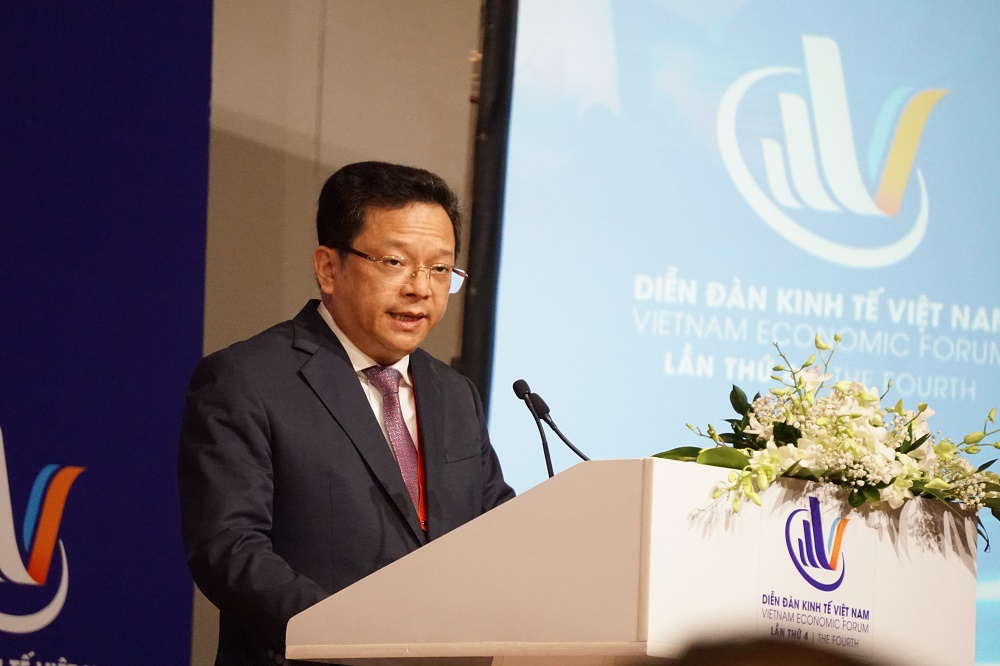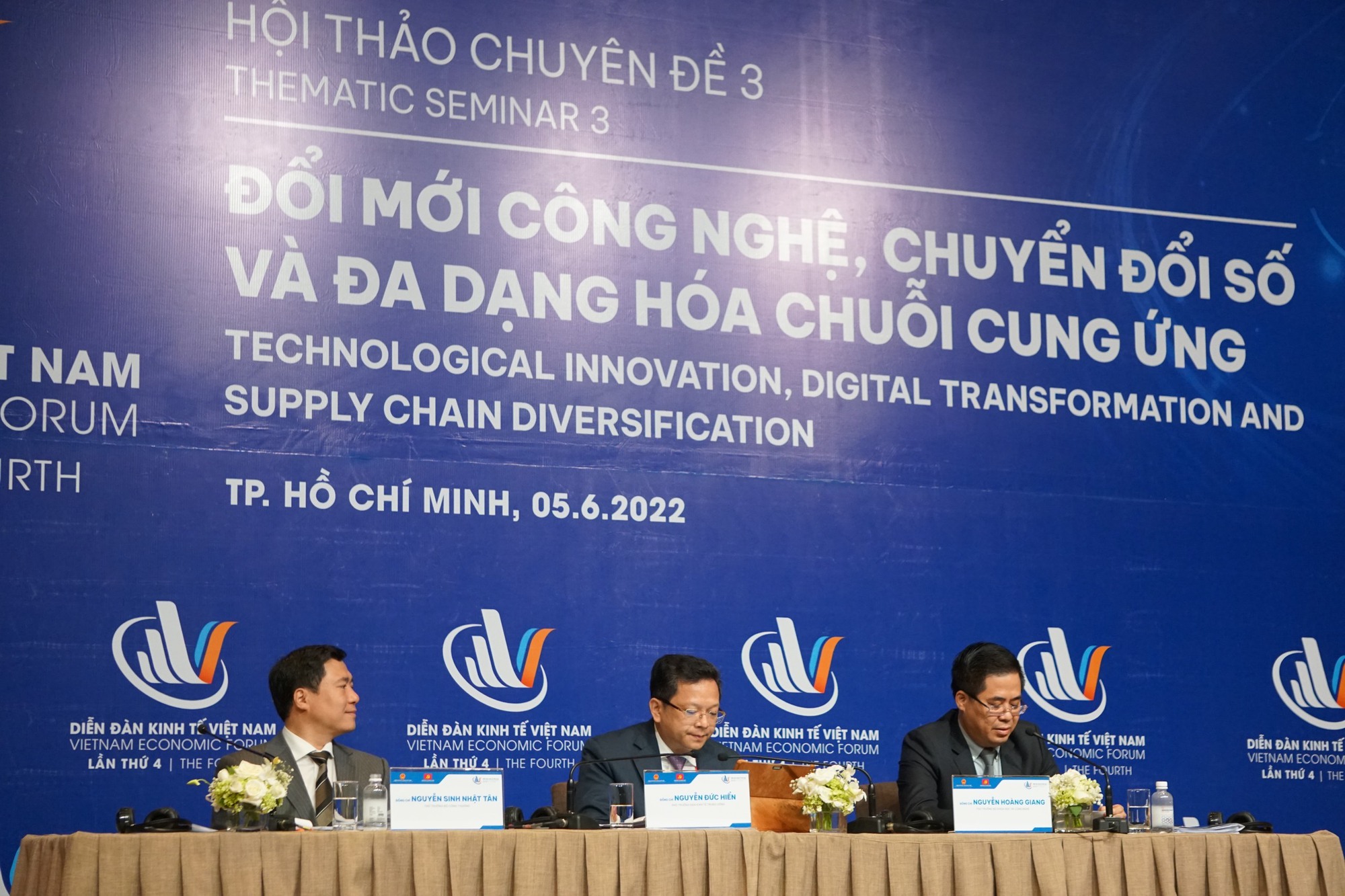Vietnam is not necessarily behind in technological innovation and digital transformation

Deputy Head of the Central Economic Commission Nguyen Duc Hien. Photo: BD
Digital transformation is the key to building a supply chain
Deputy Head of the Central Economic Commission Nguyen Duc Hien said that, with the characteristics of Vietnam’s economy being highly open, challenges from the international economic environment can quickly, strongly and unpredictably affect the implementation of economic activities. implement the program of economic recovery and development as well as the socio-economic development goals for the 5-year period 2021-2025, the socio-economic development strategy 2021-2030.
“Innovation and digital transformation help accelerate the construction and development of a creative economy, science-technology and innovation-driven growth. Diversification of the supply chain is key to building it.” a sustainable supply chain, highly adaptable to major fluctuations of the world and regional economy, ensuring stable production activities, and effectively participating in the global value chain”, said Mr. Nguyen Duc. Hien said.
Regarding technological innovation, in 2020, the state granted 4,319 patents; 18,197 international publications; the rate of spending on research and development in the non-state sector increased to 40.07%, the FDI sector 12.87%, the state sector 47.05%. The National Fund for Technology Innovation has mobilized nearly 800 billion VND from businesses for ongoing projects. Besides, it is also possible to mention the National Technology Innovation Program to 2030, approved by the Prime Minister in 2021 with the target that the number of enterprises implementing technological innovation will increase by an average of 15%-20% per year.
Regarding digital transformation, by the end of the first quarter of 2022, 22/22 ministries, branches and 63/63 localities have established a Steering Committee; 55/63 localities have issued resolutions, directives and documents of the provincial and municipal Party Committees on digital transformation; 59/63 localities and 19/22 ministries and branches promulgate programs, plans and schemes on digital transformation for a 5-year period.
Regarding supply chain diversity, Vietnam has joined and signed 17 FTAs with leading important partners in the world, including many new-generation trade agreements such as CPTPP, RCEP, EVFTA. Some Vietnamese enterprises are also increasingly participating more effectively in regional and global supply and production chains, continuously expanding input and output markets for products made in Vietnam. .
The economy is open but unsustainable
However, an objective assessment shows that Vietnam’s technological innovation, digital transformation and supply chain diversification still have many limitations.
According to the IO analysis results, the group of professional science and technology activities has a much lower spread and sensitivity than the general average. Besides, the efficiency of technology innovation only contributed modestly at 28.44% in the TFP period 2016-2018; The rate of patent granting to Vietnamese people is very low, the highest year (2018) only reached 9.2% of the total number of patents granted in Vietnam.

Digital transformation is the key to building a sustainable supply chain. Illustration
“Up to now, we have not built a national innovation system with the synchronization of science and technology supply stages of universities and research institutes, applicability and investment capacity. investment in science and technology of the business sector and the management system and policies of the State.
Digital transformation in manufacturing industries is still slow; There is a lack of effective supporting mechanisms and policies on digital transformation, breakthrough mechanisms to diversify supply chains for enterprises to implement technological innovation, and incentives for products created from technological innovation. , number conversion is not much. The economy has a large openness and high integration, but it only focuses on a few markets, leading to dependence and unsustainability”, Mr. Hien acknowledged.
Sharing the same view, Deputy Minister of Industry and Trade Nguyen Sinh Nhat Tan also said that the impact of the 4th industrial revolution and the Covid-19 pandemic has had an impact on a highly open economy like Vietnam. “This has forced businesses to reorganize their supply chains, innovate their production and business methods to suit the new situation through the application of outstanding achievements of digital technology,” said Deputy Minister of Industry and Trade. Nguyen Sinh Nhat Tan commented.
Accordingly, the disruption of the supply chain has accelerated the investment shift to diversify the supply chain, reduce dependence on foreign sources, and accelerate the process of innovation, application of high technology and transformation. for production and business activities of both foreign-invested enterprises and domestic enterprises.

Digital transformation is one of the three main themes at the Vietnam Economic Forum. Photo: BD
More specifically this trend, Mr. Ngo Khai Hoan, Deputy Director of the Department of Industry, Ministry of Industry and Trade said: The future of the supply chain is digitization and self-operation. The Covid-19 pandemic has accelerated a number of pre-existing trends, the most noticeable of which are automation, robotics, and digital transformation.
This trend promises huge benefits to labor-intensive industries such as textiles, garments, leather and footwear – Vietnam’s key export industries. However, it is also a challenge due to the lack of information and proper understanding of digital transformation in production, as well as the lack of resources to implement.
Mr. Hoan said that simply applying digital technologies in the factory does not mean that a digital supply chain will be formed and self-operated, it requires a connection throughout all activities taking place outside. inside and outside the business, from planning to procurement, manufacturing and logistics.
“Even though it is a developing country, Vietnam will not necessarily be behind in the process of technological innovation, digital transformation and supply chain diversification,” Hien affirmed. According to him, it is necessary to change the financial mechanism for science and technology, allow enterprises to use the science and technology funds set up at enterprises, and promote enterprises to develop science and technology, because statistics currently only 0.1% of enterprises set aside this fund.
Proposing innovation policies, considering forming a Law on Innovation, a mechanism for enterprises to easily commercialize scientific and technological products. In addition, increasing spending on science and technology and research and development capacity. In particular, consider enterprises as the focus of technological innovation and digital transformation.
Regarding the supply chain, according to Mr. Hien, regionalization instead of globalization… are trends that Vietnam needs to consider to make appropriate adjustments. It is necessary to promote all forms of association under the “supply network”. In particular, policies to attract FDI need to be concretized and forms of support should be changed.
at Blogtuan.info – Source: danviet.vn – Read the original article here



